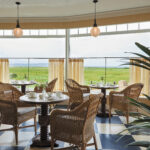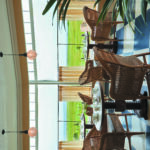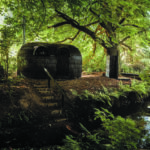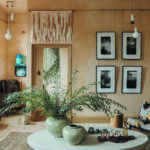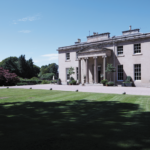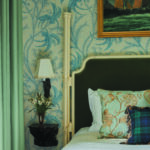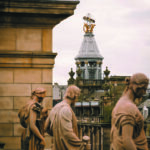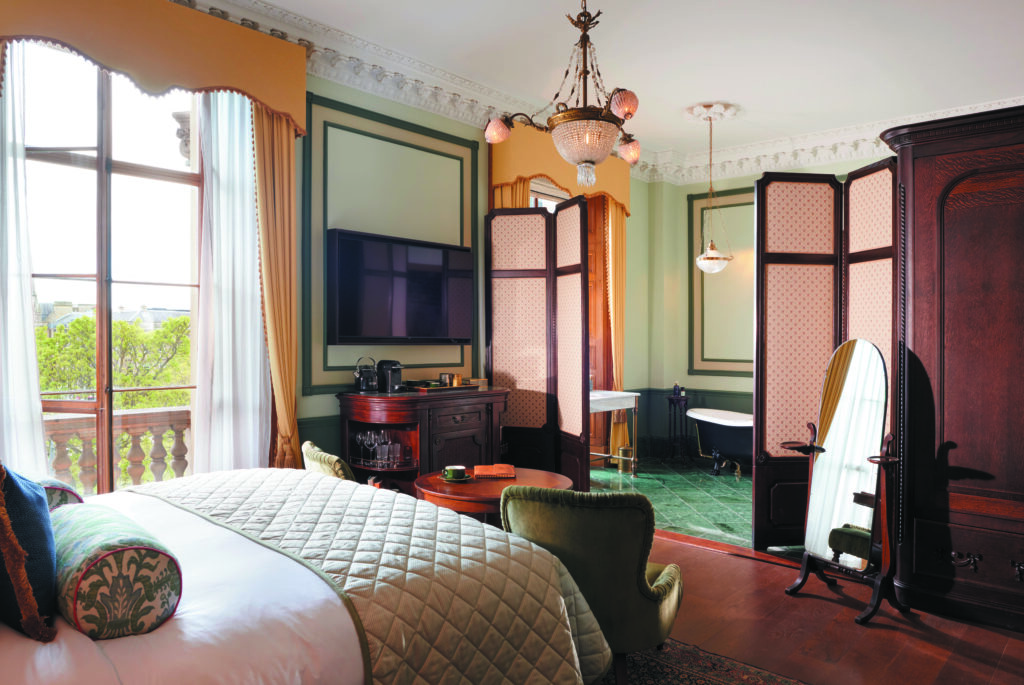City, Country and Coast
Author:Anh-Minh LeSláinte to Scotland’s craft heritage and stylish new hotels
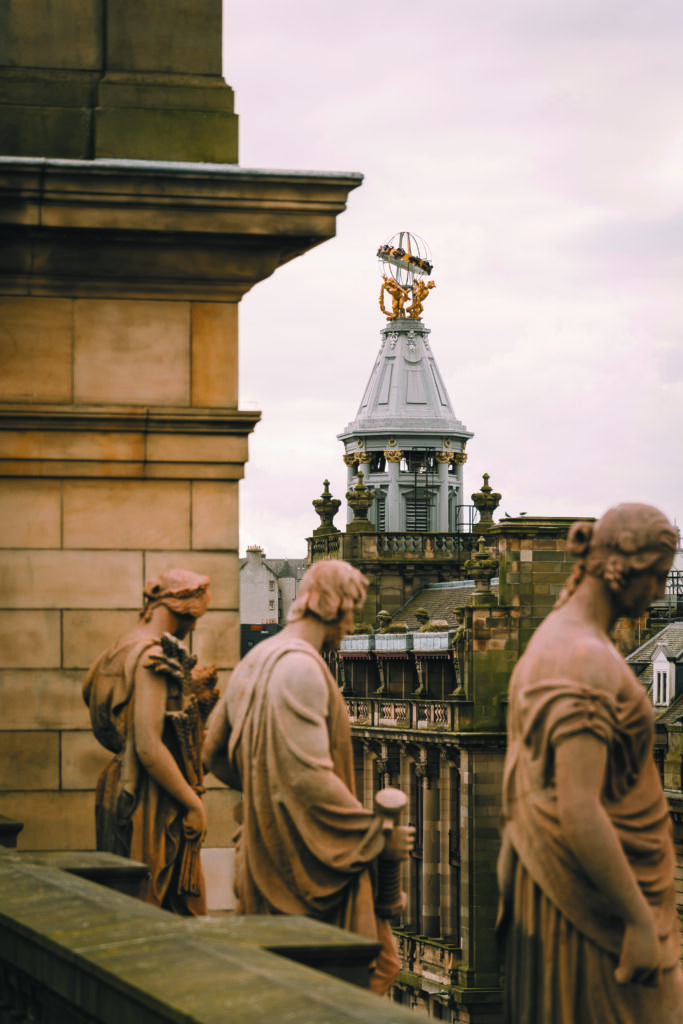
Alluring as it is, Scotland may not immediately come to mind when you think of design destinations. Yet with a rich craft heritage that permeates the culture—from its whisky making to handmade wares that draw on techniques that date back centuries—it has a strong case, even more so with a trio of new hotels that would sate any aesthete. Each offers a distinct setting, and a stay at all three encourages exploration that further bolsters Scotland’s charms.
During a recent trip, I navigated between Edinburgh, the capital city; the Scottish Highlands, a mountainous region in northern Scotland; and Troon, on the west coast. While such an itinerary showcased the country’s natural beauty, which can be enjoyed from a train or rental car, at and between my stayovers I was able to indulge my design interests, too. A common thread that was particularly compelling: the notion of honoring the past, including a deep-seated spirit of innovation, with an eye on the future.
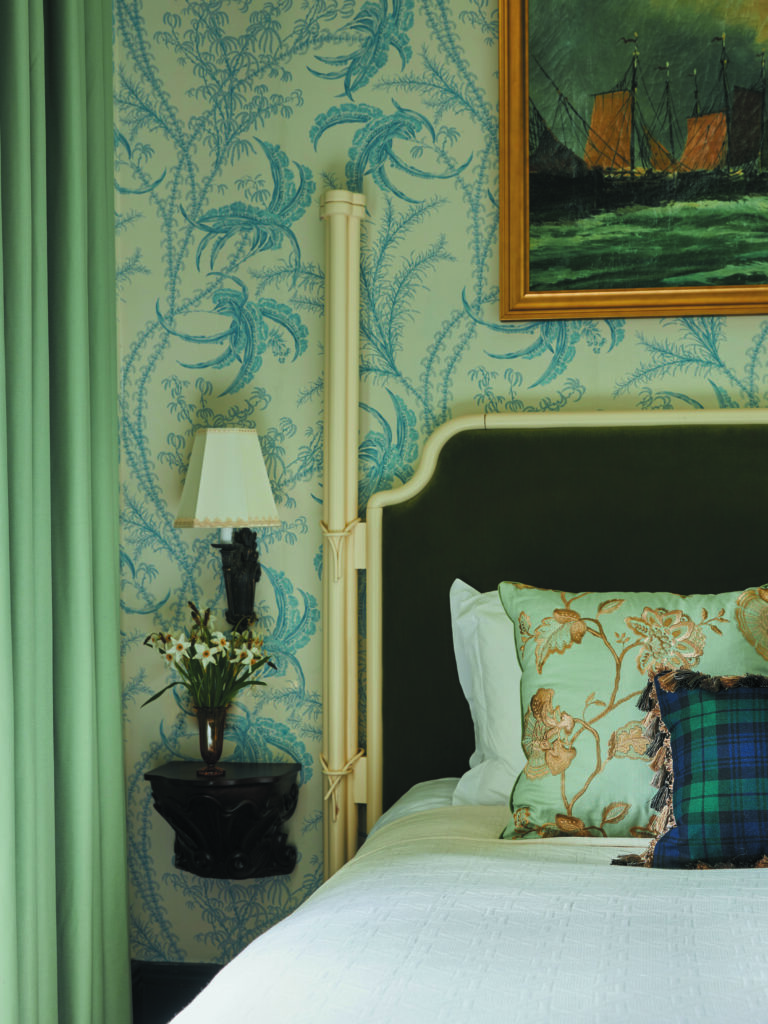
Take Mortlach, founded in Dufftown in 1823. Last year, the company launched Mortlach by Design, collaborating with six creatives on products that represent the brand and its whisky. Chrissa Amuah, for example, devised a multifaceted light fixture which, thanks to computer-programmed LEDs, changes colors. The designer was inspired by Mortlach’s multi-step distillation process, pioneered in 1897 and still used today.
While Mortlach doesn’t offer public tours, there are dozens in the Highlands that do, imparting how whisky has been crafted for generations. At some, like the 19th-century Glen Ord facility, where Singleton is produced, visitors can fill their own bottles directly from a cask. For those desiring pours without a distillery tour—but still lots of history—Edinburgh’s Johnnie Walker Princes Street boasts an array of experiences across its eight floors. (Sláinte, Gaelic for “health,” is a way to cheers.)
Mill tours—think: cashmere and wool—are also a thing in Scotland. In the Highlands, get a behind-the-scenes look at Johnstons of Elgin, founded in 1797, plus visit the shop at the revered brand’s headquarters. In Ayr, near Troon, Alex Begg has an outlet next to its 121-year-old mill. (Another Ayr attraction: Robert Burns Birthplace Museum celebrates the Scottish poet with a museum and sculpture-lined walking path to his childhood cottage and garden.)
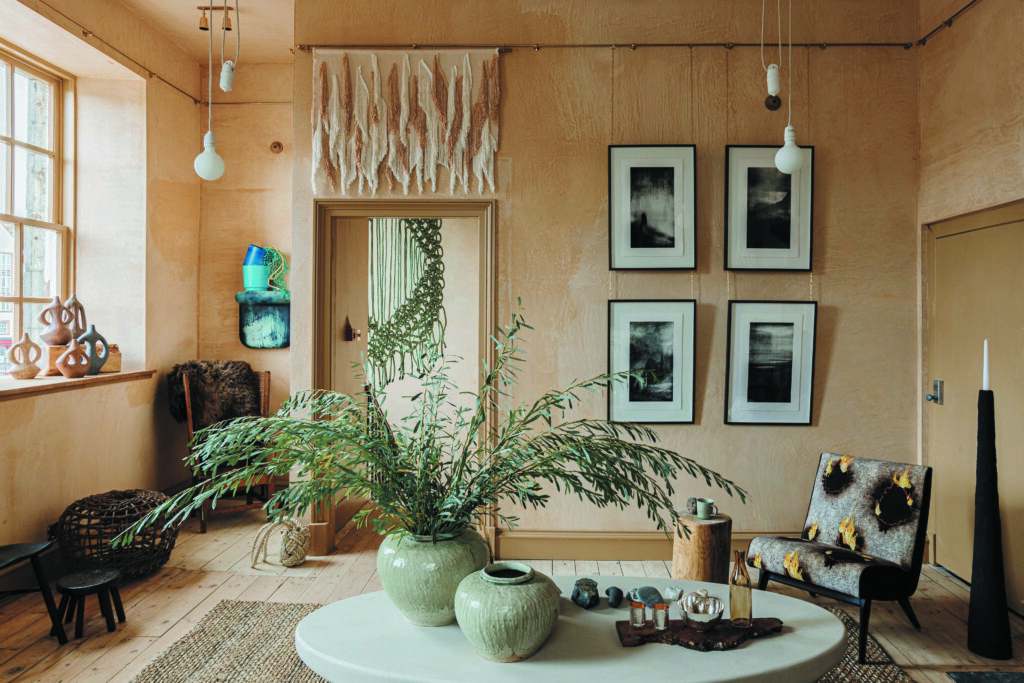
My travels also took me to small yet mighty showrooms specializing in Scottish craft and design (the best places for mementos, in my opinion). In Edinburgh’s Leith district, husbands Hugo Macdonald,
a former Monocle editor and brand director of Studioilse, and James Stevens, an architect and interior designer, opened Bard last November. The couple visited studios, workshops and factories to curate Bard’s inventory, which highlights dozens of Scotland-based makers and designers—like Mark Cook, who employs traditional knotting practices to turn rope that washes ashore into doormats, and Juli Bolaños-Durman, whose pieces combine found and donated glass, resulting in whimsical, singular artifacts.
In the Highlands village of Braemar, Ben and Tom Addy opened Tor Workshop in 2020. The brothers sell their own furniture and objects— handcrafted from Scottish wood—as well as whisky and goods by fellow Scottish makers. The Addys’ contracting business led the restoration of the Fife Arms boutique hotel, located across the street and owned by Hauser & Wirth cofounders Iwan and Manuela Wirth (the lobby gift shop is curated by the latter). The confluence of old and new extended to my accommodations—three properties that debuted in the past year. Although their locales differ, the hotels are unified in deftly imbuing a historic setting with contemporary flair.
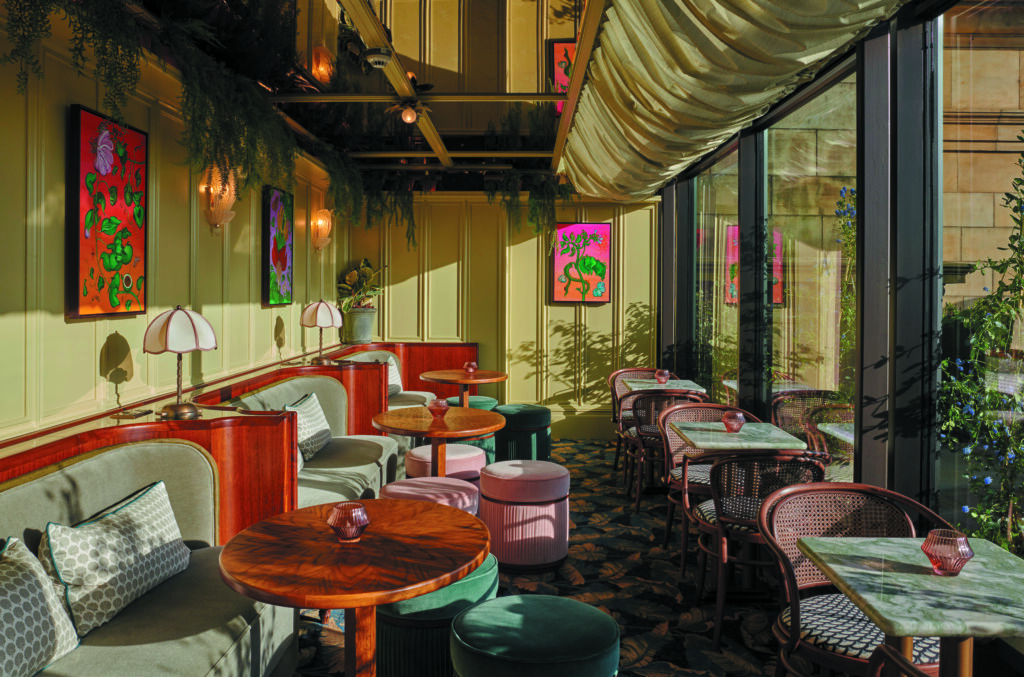
GLENEAGLES TOWNHOUSE, EDINBURGH
Gleneagles Hotel, the famed resort in the Perthshire countryside, has brought its brand of luxury to Edinburgh’s St Andrew Square, where a grand 19th-century building, previously a bank, has been restored and revived as Gleneagles Townhouse. The lobby’s preserved stained-glass panels, geometric tiles and florid balustrade make quite the first impression.
Adjacent to the lobby, the Spence restaurant—where chef Jonny Wright’s classic dishes with a modern twist can be savored all day—is jaw-droppingly beautiful. The bar is centrally located beneath a soaring glass dome. The venue’s ornate plasterwork and Corinthian columns are the backdrop to plush seating upholstered in shades of pink and green. Elsewhere, enjoy a cocktail at Lamplighters rooftop bar and partake in a yoga class or cryotherapy session at the wellness center, dubbed the Strong Rooms (the old bank vaults are here). Furnished with period originals and custom reproductions, the 33 unique guest rooms are stately yet unstuffy, with patterned textiles from the likes of Marvic and Turnell & Gigon softening the spaces. Indeed, my canopy crown headboard evoked the comfort of a warm embrace.
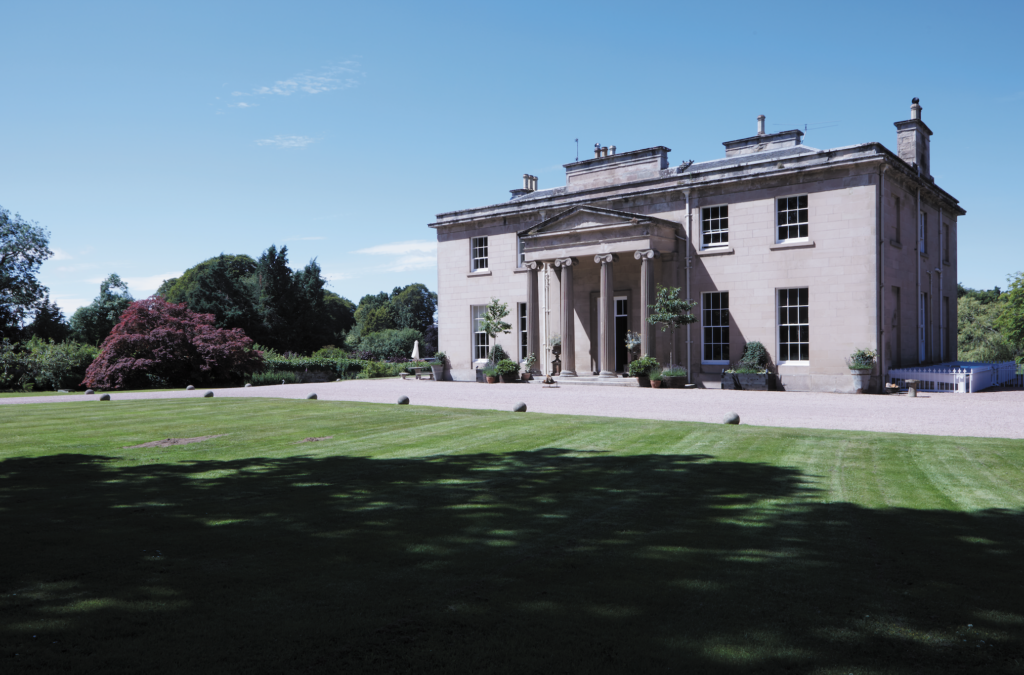
BOATH HOUSE, NAIRN
Artist Jonny Gent and architect Russell Potter have conjured a pastoral retreat in the Highlands. Boath House’s 20 or so acres are anchored by an early-1800s Georgian mansion with seven guest rooms; there are no televisions in the rooms, but there is a state-of-the-art cinema in the basement. Two studio cottages and a four-bedroom lodge offer additional quarters.
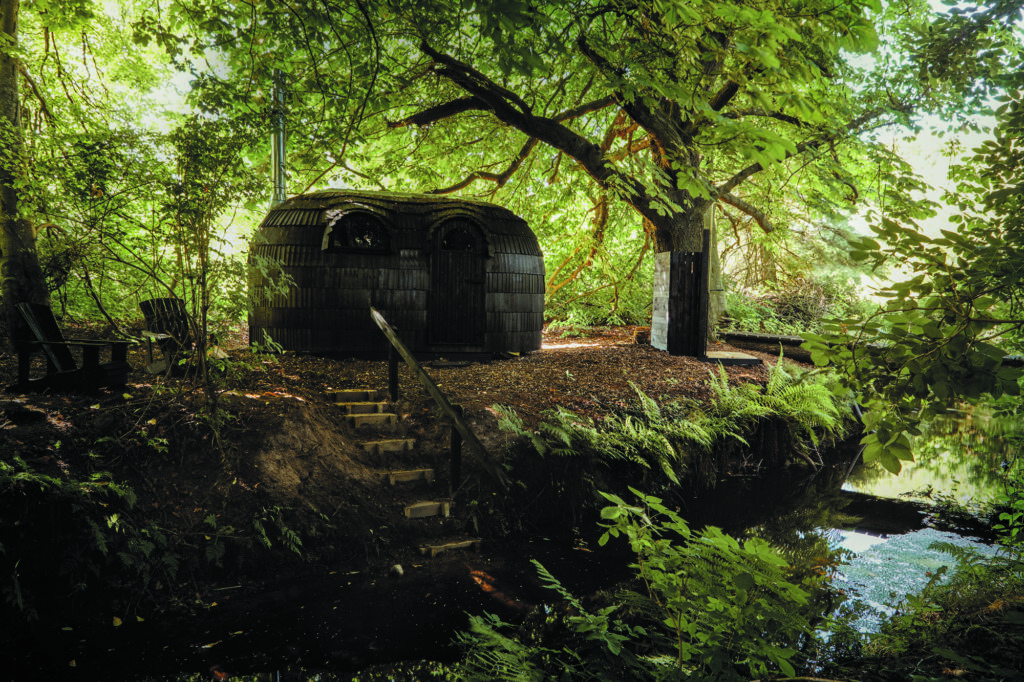
The main building’s architecture is juxtaposed with Gent’s monastic design schemes and populated with period pieces (my room, No. 3, had two clawfoot bathtubs). The foyer is flanked by an airy drawing room and a decidedly moodier library, painted in Farrow & Ball’s Studio Green. The restaurant is situated within a centuries-old walled garden that provides the kitchen with produce and ingredients. The menu, influenced by British, French and Italian cooking, sources from local purveyors as well. Boath House’s grounds also yield plenty of opportunities to relax— perhaps in a hammock or in the Nordic-style wood-fired sauna, both situated by water. (Keep an eye out for Shetland ponies.)
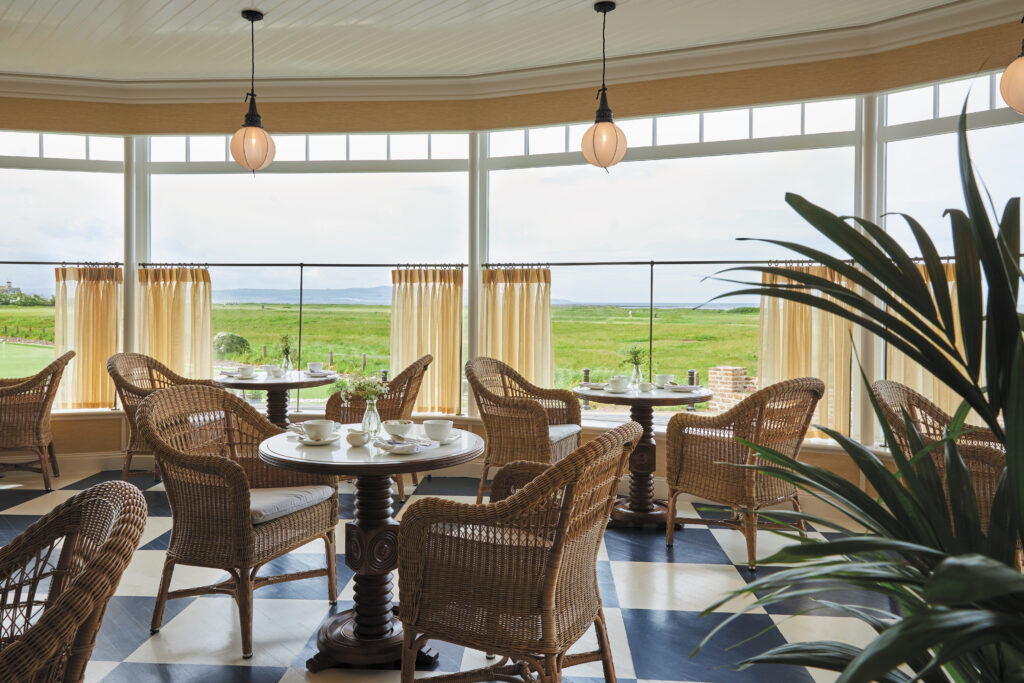
MARINE TROON, TROON
Although popular for its beaches, Troon is arguably best known for its golf courses. Royal Troon Golf Club, adjacent to Marine Troon—the links and the water were visible from my room—will host the Open
Championship in 2024. Luke Edward Hall’s sketch of Arthur Havers, who won the Claret Jug in 1923 at Royal Troon, hung near my bedside. Those who meet the handicap requirement can book a tee time; the hotel’s indoor pool and spa were more my speed.
Marine Troon, housed in a building that has served as a hotel since the 19th century, features 89 well-appointed rooms. There’s a real sense of place here, with nods to the area’s golf and maritime history: The lobby’s rustic wood, navy velvet and cognac-hued leather exude a clubhouse vibe, while the decor in my room included a woven seagrass chandelier, oceanic toile wallpaper and tartan touches. The on-site Rabbit restaurant and Seal bar offer stylish spots—truly master classes in mixing prints—to dine and drink. Sunday roast or afternoon tea, anyone?
